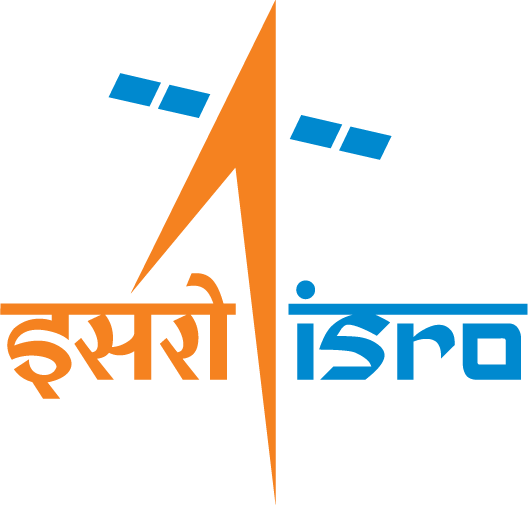Shweta Pokhariyal, N. R. Patel and R. P. Singh
“Detecting water stress in crops accurately is the basis of precision irrigation techniques and proximal remote sensing providing innovative and faster solutions to address sustainable water management”
In era of World facing global issue of water scarcity on the rise, the need for precise irrigation scheduling has become critical for ensuring sound water management and “More Crop Per Drop” Irrigation scheduling, for example, can be based on crop water status monitoring. The crop water status indicates the current condition from sufficiently watered to severely stressed. Therefore, it gives good information on “when” and “where” to irrigate. Temperature is fundamentally important to almost all aspects of plant function. Consequently, the availability of infrared thermal sensors offers a robust tool for identifying and quantifying crop water stress. Ground-based thermal sensing can serve as the primary means by which irrigation is scheduled. Because of the strong and direct physical relationship between canopy temperature and water stress under a given sun positon and set of weather conditions, irrigation scheduling based on canopy temperature is quite close to monitoring and responding to water stress itself, especially compared with calendar based or weather based irrigation scheduling. Canopy temperature, can be defined as the average temperature of multiple leaf assemblages aggregated from individual branches up to whole crowns. It strongly influences, and is influenced by ecosystem – atmosphere exchanges of water, energy, and carbon (Figure 1).

Figure 1: Energy, water, and carbon fluxes influenced by and influencing canopy temperature
Spatial variability of canopy temperature is closely related to irrigation management practices, irrigation application uniformity, and more directly to water deficit. Canopy temperature is related to plant water stress because the evaporative cooling involved in transpiration may cool leaves below ambient air temperature. If soil water is limiting, plant water stress develops, transpiration decreases and the canopy temperature rises. This phenomenon can be observed in Figure 2 where decrease in volumetric water content (VWC) during June month resulted in higher canopy temperature in comparison to the July month. Plants with adequate supply of water maintained their canopy temperature below the air temperature, whereas the plants with inadequate supply of water exhibited their canopy temperature above the air temperature.

Figure 2: Thermal imaging of sugarcane crop in year 2023
Infrared thermography offers significant advantages over gas-exchange measurements in plant phenotyping studies where stomatal responses are crucial. Stomatal closure, a common plant response to stressful abiotic conditions such as water deficits from low soil moisture and/or high atmospheric vapor pressure deficit, affects the difference between air temperature (Ta) and canopy/surface temperature (Ts), serving as an indicator of water stress (Figure 3). As depicted in Figure 3, the Ts was higher than the Ta during the initial stage of the sugarcane crop, indicating water stress. In contrast, during the grand growth stages, irrigation and precipitation led to the Ts being considerably lower than the Ta, indicating non-stress conditions. Moreover, the difference between Ts and Ta can indicate the crop’s growth stages. During the initial growth stages, when plants are young and their root systems are not fully developed, they are more susceptible to water stress.

Figure 3: Pattern of surface temperature, air temperature and precipitation during the sugarcane growing period in year 2023
This can lead to reduced transpiration rates, causing the canopy temperature to rise above the air temperature. A similar situation occurs when the plant starts to senesce due to natural aging processes or water stress conditions, which decrease transpiration and increase canopy temperature. During periods of active growth, such as the grand growth stage in crops like sugarcane, plants typically have well-developed root systems and can efficiently take up water. This results in high transpiration rates, which cools the leaf surface and often causes the Ts to be lower than the Ta. Adequate irrigation and precipitation during this stage also contribute to lower canopy temperatures, indicating healthy, non-stressed plants. If the Ts remains consistently higher than the Ta, it can be a strong indicator of ongoing water stress regardless of the growth stage. This could signal the need for irrigation or other management interventions Canopy temperature therefore provides direct insight into plant eco-physiological processes including rates of photosynthetic carbon dioxide assimilation and transpiration. Thermal imagery could also be applied for disease detection, mapping soil properties, tillage mapping, drainage tile mapping, crop maturity mapping, and leaf water potential mapping.
References
Farella, M. M., Fisher, J. B., Jiao, W., Key, K. B., & Barnes, M. L. (2022). Thermal remote sensing for plant ecology from leaf to globe. Journal of Ecology, 110(9), 1996-2014.
Still, C. J., Rastogi, B., Page, G. F., Griffith, D. M., Sibley, A., Schulze, M., & Helliker, B. R. (2021). Imaging canopy temperature: shedding (thermal) light on ecosystem processes. New Phytologist, 230(5), 1746-1753.
Pineda, M., Barón, M., & Pérez-Bueno, M. L. (2020). Thermal imaging for plant stress detection and phenotyping. Remote Sensing, 13(1), 68.
Zhou, Z., Majeed, Y., Naranjo, G. D., & Gambacorta, E. M. (2021). Assessment for crop water stress with infrared thermal imagery in precision agriculture: A review and future prospects for deep learning applications. Computers and Electronics in Agriculture, 182, 106019.



